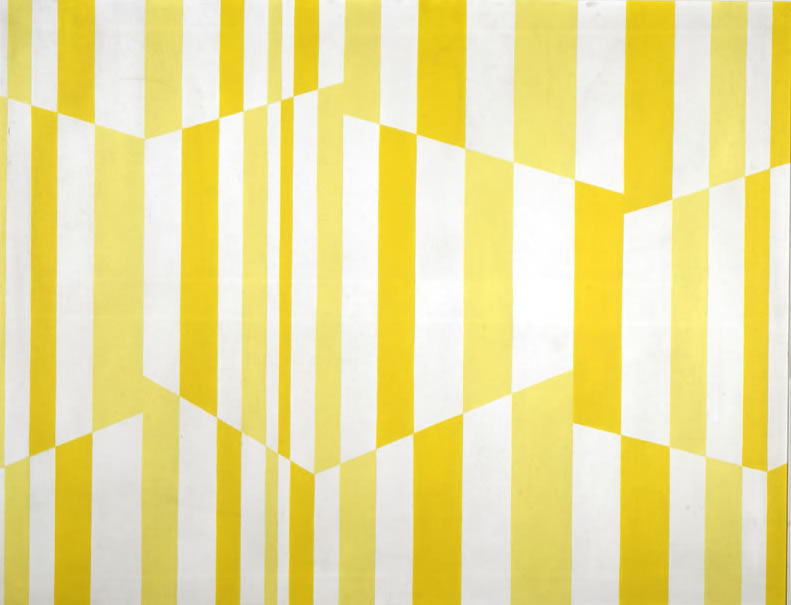Francesco Guerrieri was born in Borgia and moved to Rome in 1939. After earning a law degree, he attended the Accademia dell’Associazione Artistica Internazionale and the classes of the Académie de France in Rome. Until 1962, he focused on cycles of informal and mixed-media works, and exhibited his oeuvre at the 8th Art Quadriennale of Rome. Together with Lia Drei, Giovanni Pizzo, and Lucia di Luciano, he established the Gruppo 63 art group. However, the following year, the group dissolved and, together with his wife Lia Drei, Guerrieri gave life to Sperimentale P (1963-1968). From 1968 to 1978, Guerrieri expanded his scope of action, devising happenings and large installations. In the 1980s, he also addressed Meta-painting. He held several solo shows and participated in national and international exhibitions. In more recent years, he exhibited at Percorsi riscoperti dell’Arte Italiana 1947 – 2010, VAF/ Stiftung housed at MART in Rovereto (2011).

– title: Giallo 2TQ
– date: 1968
– medium: acrylic paint on canvas
– size: 108×138 cm
– description: 2TQ is an abstract painting playing on a grid of colours created by the juxtaposition of alternating white and yellow bands. It earned Francesco Guerrieri first prize at the 1968 Masaccio Painting Awards. This painting belongs to the cycle entitled Quadri di luce, which the artist developed from 1967 to 1977. In these years, together with his wife Lia Drei, he created Sperimentale P. (where P. stands for ‘Pure’), which allowed him to investigate an artistic language based on perception, meant both as a retinal process and more complex stances. With this cycle of works, Guerrieri explored the effects of the diffusion of a white colour when placed next to two alternating yellow shades, with the ultimate goal of transforming colour into light. Through an apparently purely linguistic exploration, which however also has an underlying symbolic value, the artist removes the painting from the centre of the representation: in fact, 2TQ relies on a minimum use of shades of colour and on the relationship between painting and the background created through the quality of sign and rhythm. The painting therefore takes shape by subtraction and presents itself as a continuum of construction and deconstruction, where background and the foreground figure swap roles and eventually allow light to surface.